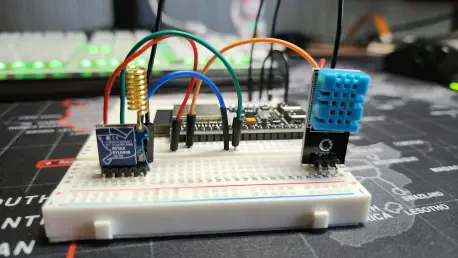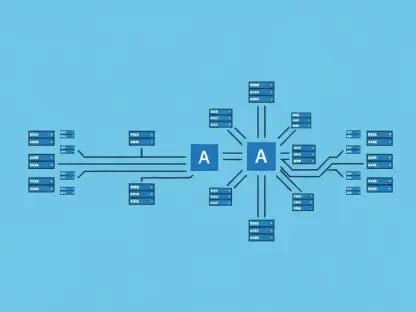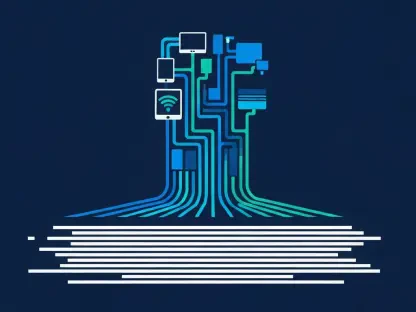In the ever-evolving landscape of embedded systems, real-time operating systems (RTOSes) have become indispensable tools for developers seeking speed, efficiency, and reliability. With the advent of Eclipse ThreadX as an open-source solution, alongside PX5’s RTOSX, the industry is witnessing a pivotal shift towards enhanced accessibility and standardization. Developed by Bill Lamie at Express Logic, ThreadX transitioned from a proprietary product to an open-source platform following its acquisition by Microsoft. This progression offers a wealth of opportunities for developers to leverage its Azure cloud integration capabilities within an open framework, fostering broader collaboration and innovation across the embedded systems sphere.
Eclipse ThreadX and Open-Source Movement
Evolution to Open Source
The transformation of ThreadX into an open-source platform represents a significant milestone, allowing developers unrestricted access to its core functionalities. This shift emerged after Microsoft acquired Express Logic and donated ThreadX to the Eclipse Foundation. Now, developers can freely exploit ThreadX’s renowned picokernel design and robust multitasking features, including priority-based preemptive scheduling and event chaining. Despite these advantages, the open-source version, Eclipse ThreadX, lacks commercial support and safety certifications, necessitating a rethink for those relying on certified solutions. Embedded applications, particularly those requiring stringent safety compliance, often demand additional certification not provided by the open-source iteration.
Multitasking and Picokernel Design
Eclipse ThreadX’s picokernel design is characterized by its small footprint and advanced multitasking capabilities. Its priority-based preemptive scheduler ensures tasks are executed efficiently and in real-time, a core requirement for embedded systems where timing is crucial. Additional features like event chaining and rapid interrupt response times further cement its position as a preferred choice for developers. However, the absence of direct commercial support and safety certifications indicates a gap filled by RTOSX. For applications demanding rigorous compliance and certifications, RTOSX offers the necessary infrastructural support, bridging the gap between open-source accessibility and commercial reliability.
RTOSX and POSIX Compatibility
PX5 RTOSX’s Role
RTOSX, offered by PX5, emerges as a vital counterpart to Eclipse ThreadX, providing essential commercial support and safety certifications that the open-source version may lack. By integrating the strengths of ThreadX with POSIX compatibility, RTOSX revolutionizes the way developers approach embedded systems. The POSIX API brings a level of uniformity, facilitating cross-platform software migration through standardized interfaces. This consistency ensures reduced complexity and improved flexibility, making RTOSX a valuable asset for developers seeking robust support for their application needs without compromising performance. Certification for safety-critical applications further enhances its appeal, providing a pathway for applications in industries where compliance is paramount.
Interoperability and Standardization
The shift towards POSIX compatibility underscores a broader trend in the industry, prioritizing interoperability and standardization. The adoption of POSIX by RTOSX marks a forward-thinking approach to real-time operating systems, aligning with global standards and reducing development complexities. By marrying ThreadX’s minimal footprint with POSIX’s universal API, RTOSX facilitates seamless software migration and integration across different platforms. This approach not only simplifies the development process but also enhances flexibility, offering developers the tools needed to create sophisticated embedded systems that can adapt to evolving technological demands. In doing so, RTOSX fosters a thriving ecosystem ripe for innovation and discovery.
A New Era for Embedded Systems
In the dynamic realm of embedded systems, real-time operating systems (RTOSes) have emerged as essential tools for developers aiming for optimum speed, efficiency, and reliability. The industry is undergoing a significant transformation with the introduction of Eclipse ThreadX as an open-source offering, paired with PX5’s RTOSX, heralding a new era of enhanced accessibility and standardization. Originally crafted by Bill Lamie at Express Logic, ThreadX has undergone a notable transition from a proprietary entity to an open-source platform following its acquisition by Microsoft. This shift unlocks numerous possibilities for developers, allowing them to harness its Azure cloud integration capabilities within an open framework. Such accessibility fosters greater collaboration and sparks innovation throughout the embedded systems industry. These developments promise to redefine the boundaries of creativity and technological advancement, facilitating a new wave of growth and collaboration in the field.









